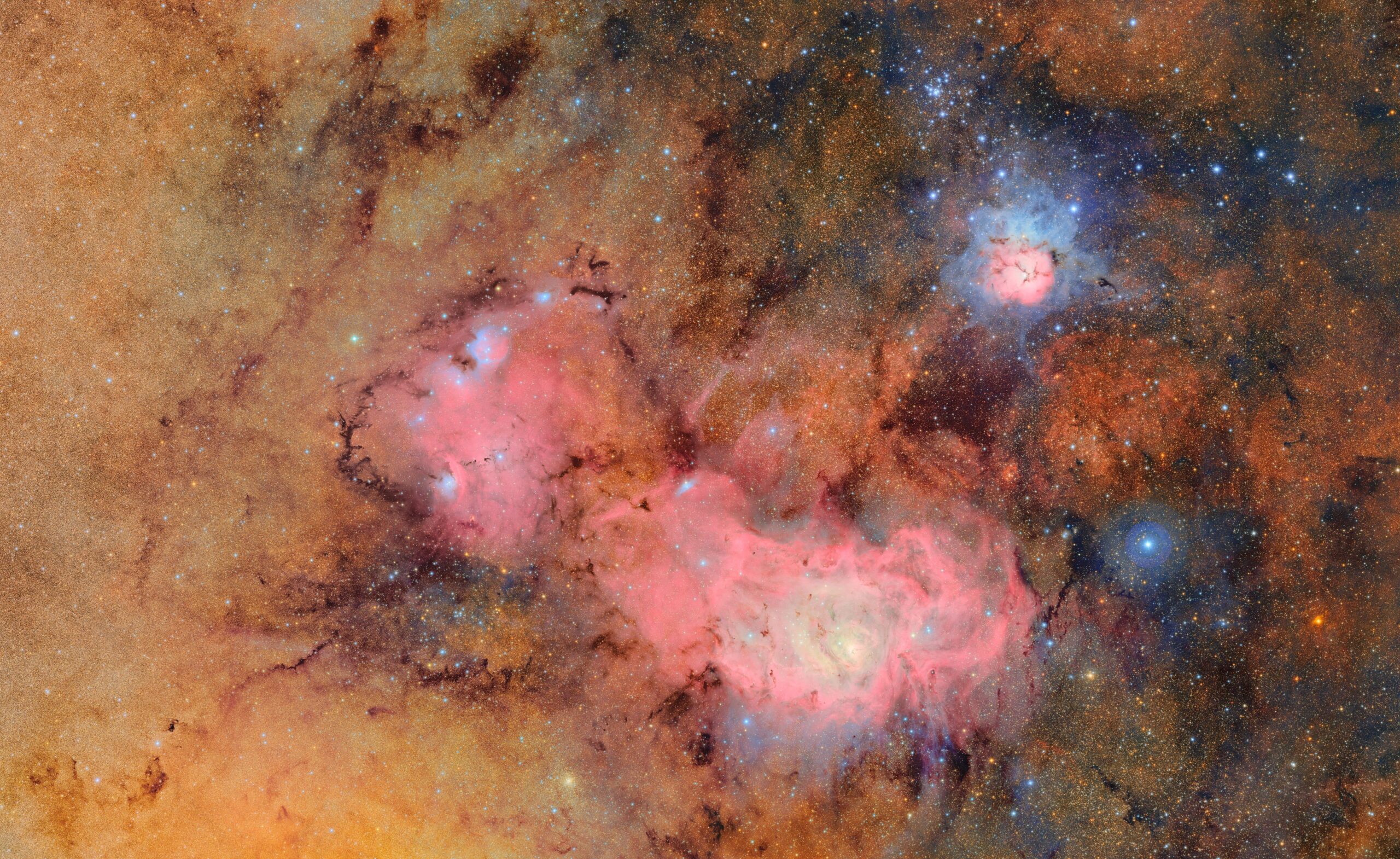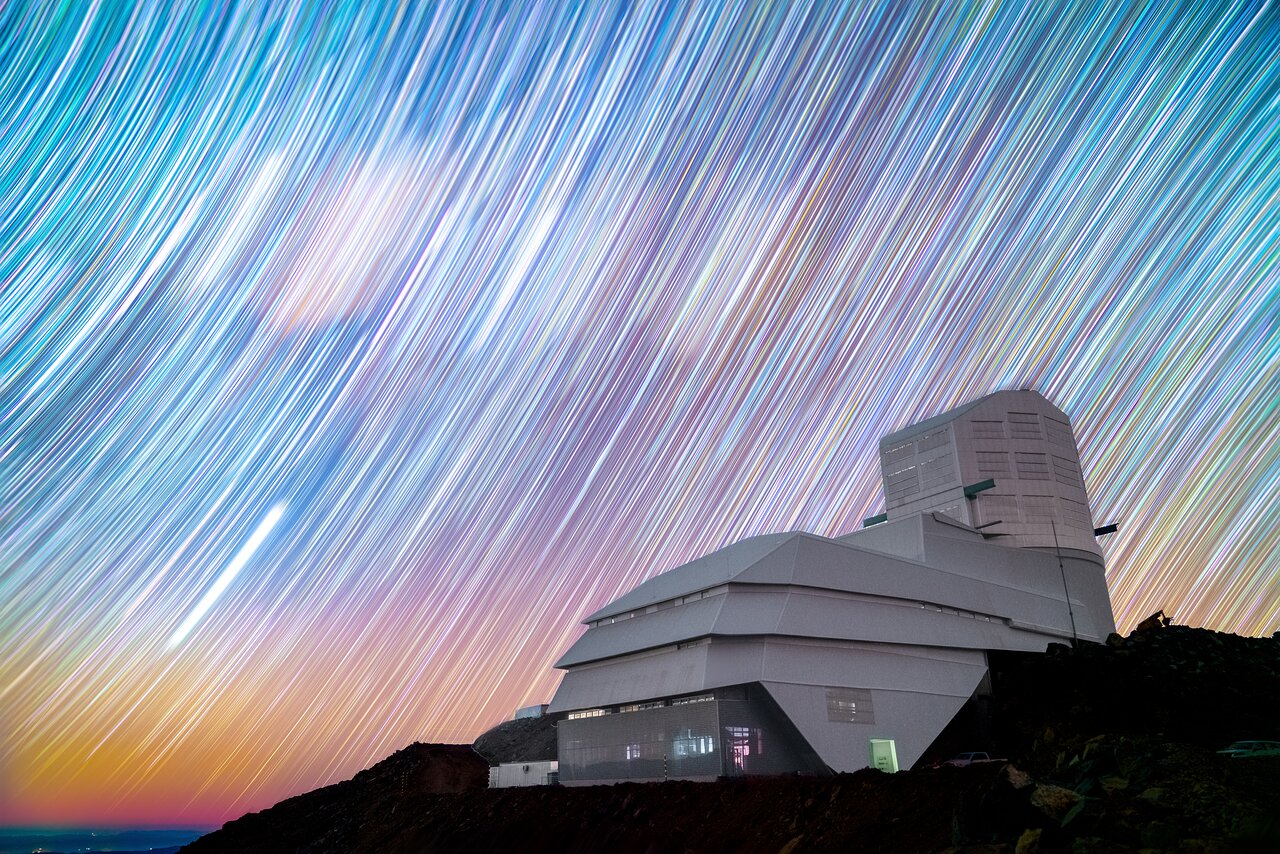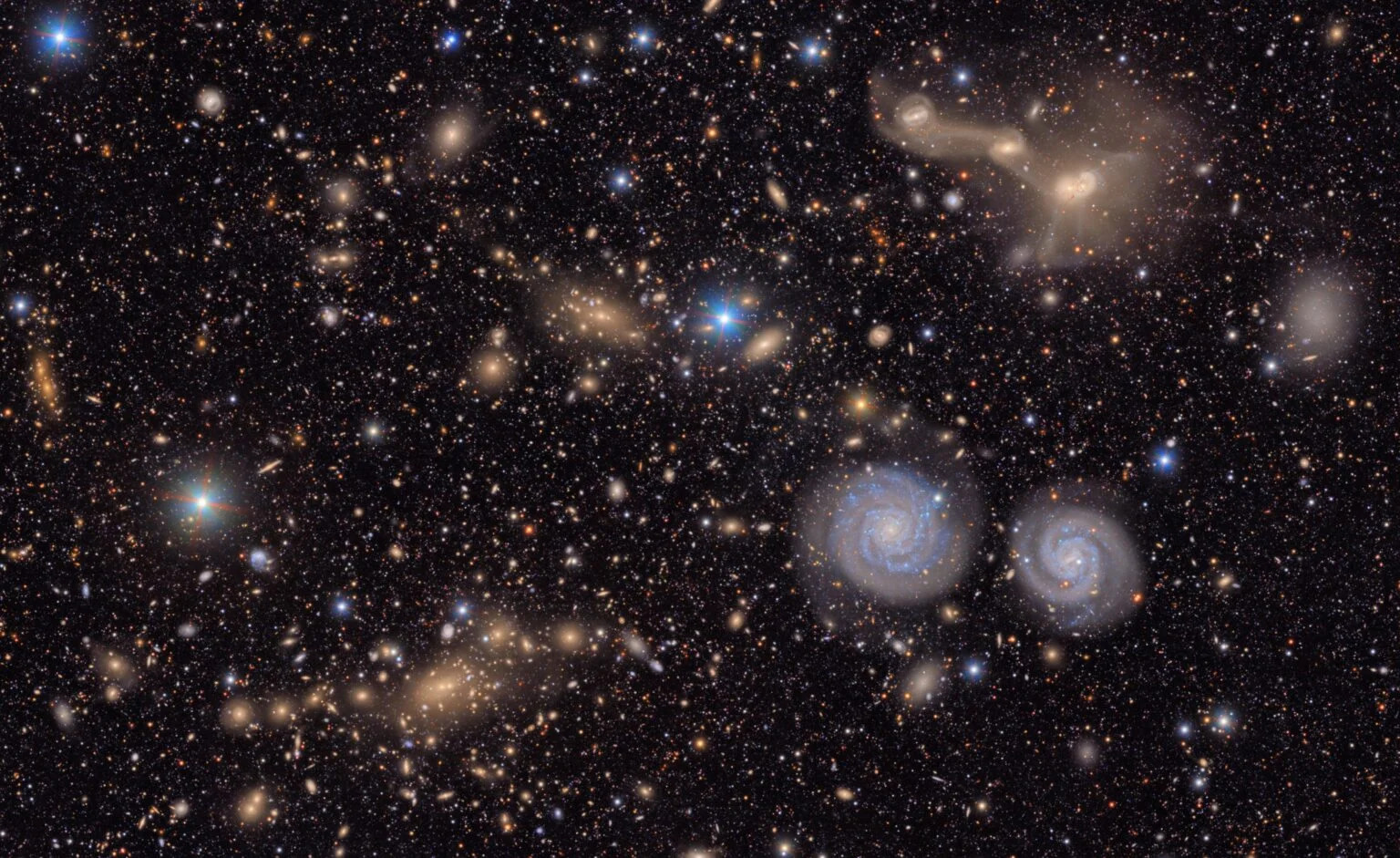An enormous, living movie of the sky, lasting ten years. This is what the Vera C. Rubin Observatory will do, and it shares its first images today. By observing the entire sky over and over again, this groundbreaking project will revolutionize the way we study the cosmos.
The Vera C. Rubin Observatory is located on Cerro Pachón Mountain, near the city of La Serena, Chile. It is funded by the U.S. National Science Foundation and the U.S. Department of Energy's Office of Science (NSF–DOE). The Rubin Observatory's main project, called the Legacy Survey of Space-Time (LSST), will last 10 years. Today, June 23, 2025, it presents its first images.
People from various institutions around the world are participating in this project. In Mexico the participating institutions formed the LSST-MX Consortium. In Michoacan, Rosa Amelia González López-Lira, project manager, and Javier Ballesteros Paredes, both researchers at the Institute of Radio Astronomy and Astrophysics, UNAM Campus Morelia, and Francisco Xavier Linares Cedeño, a professor at the Faculty of Physical and Mathematical Sciences (FCFM), Michoacan University of San Nicolás de Hidalgo (UMSNH), are participating.
LSST astronomers estimate that the project's final catalog will be approximately 15 PB (Petabytes) in size, or about 15,000 TB (Terabytes), and will contain trillions of measurements of approximately 20 billion galaxies, 17 billion individual stars in our galaxy and nearby galaxies, and the estimated orbits of 6 million bodies in the solar system.
This gigantic treasure trove of astronomical data will represent a true revolution, as the astronomical community will be able to solve mysteries in many areas of astronomy and astrophysics, such as the nature of dark matter and dark energy, the structure and evolution of the Milky Way, the formation of our Solar System, black holes, and stellar explosions or other objects that "appear" during the night. Astronomers may even reveal new questions that we still don't know how to ask.
Mexico's participation in the LSST means that our country will be part of this astronomical revolution, and that scientists and students will be able to directly participate in the discoveries this project will enable. Furthermore, the LSST-MX Consortium will carry out science outreach and communication activities, as well as teacher training, allowing the benefits of this project to reach a much broader segment of the population.
Rubin Observatory is packed with innovative technology
Named after astronomer Vera Rubin, a pioneer in the study of dark matter and the motion of stars in galaxies, Rubin Observatory features an enormous 8.4-meter diameter telescope called the Simonyi Survey Telescope. In each image, it can distinguish objects almost as faint as the most powerful telescopes currently in operation in the world. Furthermore, this telescope is extremely fast, taking only five seconds to complete an observation before it is ready for the next.
To capture each image, the telescope will use the LSST Camera, a gigantic 3.2-gigapixel, or 3,200-megapixel, digital camera, the largest in the world built to date. It will be able to observe a huge region of the sky at once, as wide as about seven times the full moon—an area roughly the size of 45 full moons.
The level of detail in each image would allow a 10-mexican peso coin, or a 1-US dollar coin, to be distinguished from about 16 kilometers or 10 miles away. These enormous images are so large and detailed that it would take 400 ultra-high-definition televisions to display just one of them in full size. Rubin's innovative data management system will transfer and process 20 TB (Terabytes) of astronomical data each night, which will be gradually made available to scientists participating in the project.
Rubin Observatory brings the night sky to life
With this enormous field of view, the LSST project will be able to image the entire sky visible from Rubin Observatory approximately every three nights. The Simonyi telescope will repeat this operation nonstop for 10 years, ultimately producing more than 1,000 images of the entire sky visible from Cerro Pachón.
This will allow for the study of billions of "transient" objects—celestial objects that change over time, like a 10-year time-lapse movie. Every time an object is detected that has changed since the last image was taken, an alert will be issued. Project scientists expect about 10 million alerts to be issued each night.
These objects will include asteroids and comets, pulsating stars, supernova explosions, and the regions around black holes. Furthermore, by adding all the images of the same region of the sky together, it will be possible to distinguish objects about 30 times fainter than those that could be detected in a single image. This will allow us to scrutinize the elusive nature of dark matter and better understand how our universe is expanding, as well as map our galaxy and discover new bodies in our solar system.
The LSST-MX Consortium is committed to Mexican society
The LSST-MX Consortium was formed to bring together the Mexican higher education institutions that are part of the LSST, enabling scientific collaboration and technology transfer among them and among the institutions and companies with which the participating institutions work.
Furthermore, the LSST-MX Consortium is committed to citizen science and the social appropriation of knowledge, through the broad dissemination of project results through science outreach and communication activities, and the training of high school teachers in the use of educational and research tools developed by the Rubin Observatory and the LSST-MX Consortium.
The Mexican institutions grouped in the LSST-MX Consortium include the Autonomous University of Puebla, the Center for Research and Advanced Studies, the Mesoamerican Center for Theoretical Physics, the Division of Sciences and Engineering of the University of Guanajuato, the National Institute of Nuclear Research, the Institutes of Astronomy, Nuclear Sciences, Radio Astronomy and Astrophysics, Physical Sciences, Applied Mathematics, and Systems, as well as the Faculty of Sciences of UNAM, the Autonomous University of San Luis Potosí, and the Michoacan University of San Nicolás de Hidalgo.


Images
Fragments from the first images from the Vera C. Rubin Observatory, including an image of the Trifid Nebula (M20) and two images of the Virgo galaxy cluster. Credit: NSF-DOE Vera C. Rubin Observatory. The images can be viewed in full at the following link.: https://noirlab.edu/public/es/news/noirlab2521/
 Picture
Picture
Vera C. Rubin Observatory and the moving star trails of the night sky from Cerro Pachón. Credits: NSF-DOE Vera C. Rubin Observatory; NOIRLab; SLAC; AURA; H. Stockebrand
 Picture
Picture
LSST camera. The array of digital detectors can be seen, as well as the lens in front of the camera. Credits: Jacqueline Ramseyer Orrell; SLAC National Accelerator Laboratory
Media contact:
René A. Ortega Minakata
Outreach and Science Communication
IRyA UNAM Campus Morelia
Text: René A. Ortega Minakata, IRyA UNAM, with information from rubinobservatory.org an the LSST-MX Consortium





